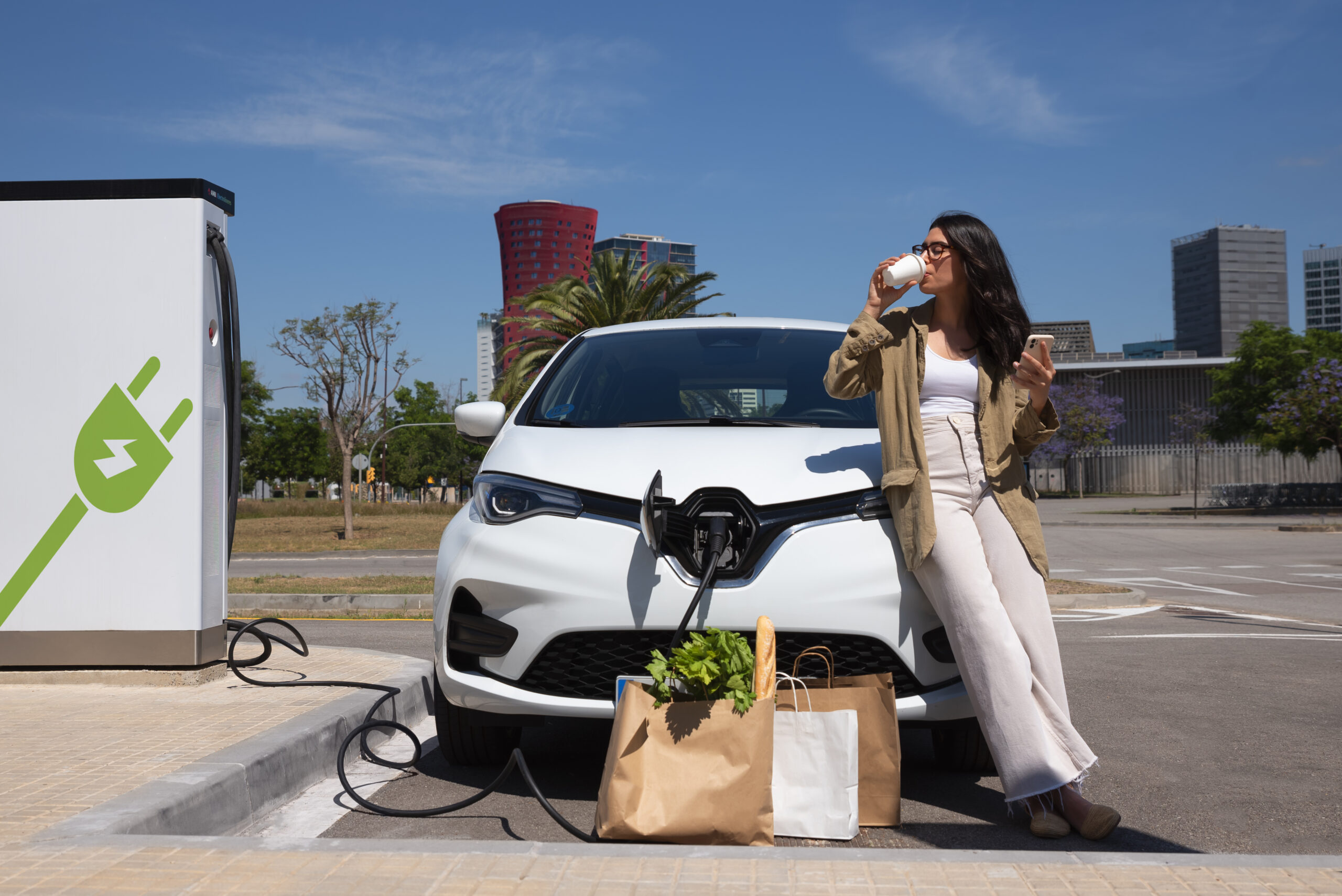
Are Electric Cars Truly Eco-Friendly?
Are electric cars truly eco-friendly? This question delves into the environmental impact of electric vehicles, comparing them to traditional gasoline cars.

Electric cars have a problem with minerals. Under the floor of an electric car is a heavy battery that weighs about 900 pounds.
This battery is made from minerals like lithium, cobalt, and bauxite, which come from different parts of the world.
These minerals are mined, processed, shipped, and refined, which can sometimes cause harm to people and the environment.
For some people, this makes traditional gas engines seem better. No one wants to drive a car that relies on harmful mining practices, like those involving cobalt. But does all this mining erase the climate and environmental benefits of electric vehicles compared to gas cars?
I researched the global supply chains for clean energy. Even in worst cases, the demand for battery minerals is much smaller than current need for fossil fuels.
However, it’s not just about quantity. For electric cars to truly be environmentally friendly, the mining and manufacturing processes must improve and become cleaner.
Here’s a comparison between electric and gasoline cars.
The toll of battery materials
Almost all cars need steel, aluminum, copper, plastic, rubber, and glass.
Electric vehicles (EVs) are different from regular cars mainly because of their battery packs. A typical EV with a 200-mile range has a lithium-ion battery that makes up almost a third of the vehicle’s weight. Much of this weight comes from the battery’s casing, structural materials, and liquid electrolyte.
According to Transport and Environment, a non-governmental organisation advocating for cleaner transport, about 353 pounds of an EV battery are made up of crucial minerals and metals like cobalt, nickel, manganese, graphite, aluminum, and copper. MIT states that, excluding steel and aluminum, an EV needs six times more minerals than a conventional car.
The demand for these materials will increase significantly as global EV sales are expected to exceed gas vehicle sales in just over a decade. Major car manufacturers like General Motors, Volkswagen, Volvo, Hyundai, and Honda are committing to electric vehicles.
Places like California and the European Union plan to ban the sale of most new fossil fuel cars by 2035, meaning most new passenger vehicles will likely be electric well before mid-century.
This shift will require expanding existing mines and opening new ones. Gerbrand Ceder, a professor of materials science at the University of California at Berkeley, notes that volume of needed minerals is large & will keep growing.
Gigafactories around the world are already pushing the mining industry to produce more clean-energy minerals. Mining minerals is not always clean.
Problems include cobalt mining in Congo, lithium and graphite extraction in China, nickel mining in Indonesia and Russia, and battery supply chains involving forced labor in Xinjiang.
Guinea’s bauxite reserves bring suffering to locals, nickel refiners in Indonesia use risky technologies & mineworkers in South Africa face health issues.
Despite these challenges, the environmental and social issues associated with mining for EVs are minor compared to impact of the oil, gas & coal industries.
Oil extraction dwarfs mining
To compare electric vehicles (EVs) with conventional vehicles, we need to look at how much we extract from the ground to make and fuel them.
Mining minerals for the clean-energy economy is measured in millions of tons per year, which is small compared to fossil fuel extraction. In 2020, building wind turbines, solar panels, EVs, and other clean-energy infrastructure required 7 million tons of minerals, according to the International Energy Agency (IEA). About half of this was for batteries and EVs.
In contrast, the oil, gas, and coal industry extracted 15 billion metric tons in 2019 and needs to keep extracting similar amounts yearly to supply energy. Clean-energy technologies, however, can use their materials for decades or even indefinitely if recycled.
Kwasi Ampofo, head of metals and mining at BloombergNEF, emphasises that fossil fuels are not comparable to minerals for clean energy, even when considering volume.
The IEA estimates that in a scenario where global warming is limited to 2 degrees Celsius, the amount of critical minerals needed would be about 500 times less in volume than today’s fossil fuel extraction.
Material mined isn’t a perfect measure of environmental damage, but the environmental effects often scale with the amount extracted. Extracting 1 ton of copper, for example, requires digging up around 100 tons of ore.
Despite this, Sam Calisch, a scientist at Rewiring America, estimates that mining minerals for the clean-energy economy involves extracting about five times less matter than the fossil fuel industry, which is still significant.
Climate impact of clean-energy minerals
EVs already emit less than a third of the emissions per mile compared to gasoline cars when using the average electricity mix in the U.S. But what if we include emissions from mining metals, refueling & disposal of EVs?
Noah Horesh, a researcher at Colorado State University who studies life cycle emissions in the transportation sector, has analysed emissions over the lifespan of vehicles.
He estimates that fossil fuel vehicles produce roughly twice the emissions of an EV, even after accounting for the extra emissions from mining and manufacturing EV components.
This difference is expected to grow as the electricity sector becomes greener and battery manufacturing becomes more efficient. People who recharge with clean electricity or drive smaller EVs may already notice a greater reduction in emissions today.
Air pollution, a leading cause of death worldwide, will also decrease. Studies in the Proceedings of the National Academies of Science and Environmental Research report that fossil fuels cause 4 million to 8 million excess deaths each year due to air pollution.
A cleaner future for EVs?
Cleaning up the mineral supply chain for batteries, unlike the oil industry, remains a distinct possibility. The Inflation Reduction Act incentivises automakers to use mineral supply chains within the United States or from countries with close trade relations.
Mining companies are being pushed to clean up their act as buyers, automakers, and countries demand more transparent supply chains. New technology is also reducing negative impacts.
None of this is guaranteed. Lead the Charge, an advocacy network tracking the supply chains of the world’s leading automakers, says many are making progress on eliminating emissions, environmental harms, and human rights violations. “But as an industry,” it says, “there is a long way to go.
Still, we’re starting to see some changes. Researchers and battery makers are racing to replace nickel and cobalt with safer, abundant, nontoxic, and cheaper metals like manganese and iron.
“There are only a few metals at the intersection of what we can use & what we produce a lot of,” says Ceder. “But we’re seeing huge progress in that area.”
Manufacturers now use six times less cobalt in EV batteries, or have eliminated it entirely. Last year, half of vehicles Tesla sold in the first quarter contained batteries with no cobalt or nickel. Recycling holds great promise.
Today, only about 5 percent of lithium-ion batteries across all products are recycled in the U.S. However, according to the nonprofit International Council on Clean Transportation.
Within a few decades, most EV batteries will likely be collected and repurposed for grid energy storage or recycled, reducing EV mineral demand by about a third. Lead-acid car batteries provide a model, with an estimated 99 percent being recycled, creating a nearly closed loop for reusing lead.
“The transition to low-carbon fuels is not a magic bullet with no negative outcome,” says Sergey Paltsev, a senior research scientist at MIT. “There is no free lunch. But it’s much less harmful than if we stay with fossil fuels. That’s the conclusion.”
Conslusion
In conclusion, while electric vehicles (EVs) offer significant environmental benefits over traditional gasoline cars, especially in reducing emissions, their production does present challenges, particularly related to the mining of minerals for batteries.
However, the scale of mineral extraction required for EVs is still much smaller compared to the vast quantities of fossil fuels extracted annually.
Efforts are underway to improve the sustainability of the mineral supply chain. Policies like the Inflation Reduction Act are encouraging cleaner and more transparent practices, and new technologies are being developed to reduce the negative impacts of mining.
The shift towards less harmful materials, such as manganese and iron, and advancements in battery recycling promise to further mitigate environmental and social concerns.
While transitioning to clean energy is not without its issues, it remains far less harmful than continuing reliance on fossil fuels. The ongoing improvements in EV technology and supply chain management aim to make the transition as sustainable and efficient as possible, making a compelling case for the continued shift towards electric vehicles.
Never miss any important news. Subscribe to our newsletter.
Related News


British Investor Who Predicted US Slump Warns of Next Crash

I’m a Death Doula: 4 Reasons I Believe Death Isn’t the End


Tech to Reverse Climate Change & Revive Extinct Species

AI Unlocks the Brain’s Intelligence Pathways

XPENG Unveils Iron Robot with 60 Human-like Joints

Can AI Outsmart Humanity?

11 ChatGPT Prompts to Boost Your Personal Brand

Keir Starmer Hints at Possible Tax Hikes on Asset Income

Navigating the Future of AI: Insights from Eric Schmidt
